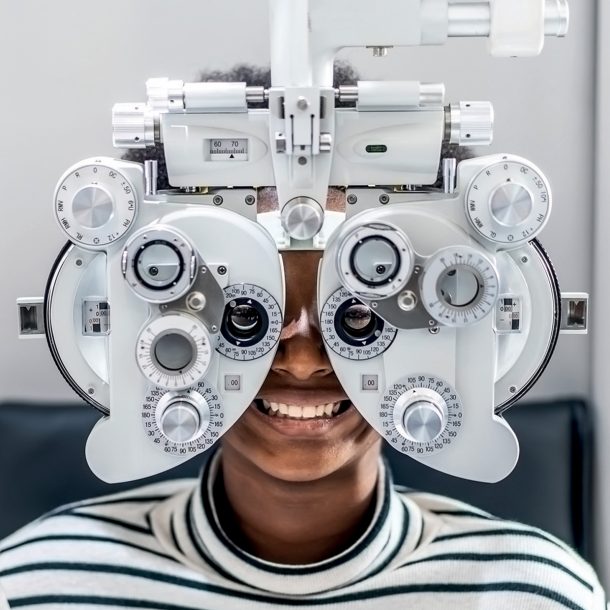-
Property & Casualty
Property & Casualty Overview

Property & Casualty
We offer a full range of reinsurance products and the expertise of our talented reinsurance team.
Expertise
Publication
PFAS Regulation and Development at the European Level with Focus on Germany and France
Publication
The CrowdStrike Incident – A Wake-Up Call for Insurers?
Publication
Decision-Making in the Age of Generative Artificial Intelligence
Publication
Buildings Made of Wood – A Challenge For Insurers?
Publication
Cat Bonds – A Threat to Traditional Reinsurance? -
Life & Health
Life & Health Overview

Life & Health
Gen Re’s valuable insights and risk transfer solutions help clients improve their business results. With tailor-made reinsurance programs, clients can achieve their life & health risk management objectives.
UnderwritingTraining & Education
Publication
Fasting – A Tradition Across Civilizations
Publication
When Actuaries Meet Claims Managers – Data-Driven Disability Claims Review Business School
Business School
Publication
Chronic Pain and the Role of Insurers – A Multifactorial Perspective on Causes, Therapies and Prognosis
Publication
Simplicity, Interpretability, and Effective Variable Selection with LASSO Regression Moving The Dial On Mental Health
Moving The Dial On Mental Health -
Knowledge Center
Knowledge Center Overview

Knowledge Center
Our global experts share their insights on insurance industry topics.
Trending Topics -
About Us
About Us OverviewCorporate Information

Meet Gen Re
Gen Re delivers reinsurance solutions to the Life & Health and Property & Casualty insurance industries.
- Careers Careers
I Can See Clearly Now – A Closer Look at The Assessment of Visual Impairment Claims

Visual impairment can be described as any chronic visual deficit that impairs everyday functioning. It can range from mild to severe and includes functional and total blindness. While the precise diagnosis is vital for determining the treatment course and prognosis, the most important element of any eye disorder is the effect it has on vision.
Many impairment-based products cover an event related to loss of vision but in some cases the definitions are not very specific. For example, what is meant by the phrases “loss of one eye”, “loss of sight” or “total loss of vision”? How is a “total” loss defined? How is permanence established? Is this the same as or different from the term “blindness”? Even in occupational disability it can be difficult to determine at what point vision loss will prevent an individual from performing his or her occupation. Which cases qualify under the policy definitions, and which do not?
To consider this further, we need to look at globally accepted definitions of vision loss, and standard tests for determining the level of loss and its permanence. We can then consider what severity is enough to meet the criteria for payment of our policies. Common abbreviations and additional resources are provided below.
Below are some common abbreviations or terms used in ophthalmology:
|
cC |
With correction (e.g., with glasses) |
|
sC |
Without correction |
|
CF |
Counting fingers, this method of testing visual acuity is used when it has been determined that the patient is unable to make out any letters or shapes on the acuity chart. For example, CF 5’ or CF 1.5 m would indicate that the patient can count the examiner’s fingers from a maximum distance of 5 feet or 1.5 metres. |
|
D |
Diopter, a unit used to designate the refractive power of a lens. In vision correction an optometrist may prescribe glasses with a power of -1.00 D to -3.00 D (in myopia) and +1.00 to +3.00 (in hyperopia). |
|
HM |
Hand motion, a method used if the counting fingers method yields little or no success. The examiner records the patient’s ability to distinguish whether there is movement of the examiner’s hand directly in front of their eyes. |
|
LASIK |
Laser in Situ Keratomileusis, a type of refractive surgery in which the cornea is reshaped to change its optical power. Used for correcting myopia, hyperopia, astigmatism. |
|
LogMAR |
Logarithm of the minimum angle of resolution, an alternative expression of visual acuity. It measures visual acuity loss; hence, positive values indicate vision loss while negative values denote normal or better visual acuity. |
|
LP/NLP |
Light perception/no light perception, an indication of the patient’s ability to perceive light. |
|
OD |
Right eye (oculus dexter) |
|
OS |
Left eye (oculus sinister) |
|
OU |
Both eyes (oculus uterque) |
|
PEARL |
Pupils Equal And Reactive to Light |
|
Perimetry or Campimetry |
A method for testing visual field whereby the patient must detect the presence of defined targets on a test background (e.g., identify when white dots become visible). |
|
Phacoemulsification |
The use of ultrasound vibration to shatter and break up a cataract, making it easier to remove. |
|
Snellen chart |
The most common eye chart used to measure visual acuity. |
|
Snellen fraction |
A representation of visual acuity in the form of a fraction: visual acuity = distance at which test is made (measured in feet or metres)/distance at which a person with “normal” vision would theoretically discern the same letter or shape. In many countries it is normal to write this fraction as a decimal: 6/6 = 20/20 = 1. |
|
VA |
Visual Acuity, a measurement of the eye’s ability to distinguish object details and shape, usually measured with a Snellen chart and described using a Snellen fraction. |
|
VF |
Visual Field, the full extent of the area visible to an eye that is looking straight ahead. |
Eye anatomy and types of vision loss
The human eye is a highly sophisticated organ with many intricate parts that, under normal circumstances, work together to create sight. As a result of the eye’s complex anatomy, numerous disorders can affect the organ. These can be caused by genetic abnormalities, congenital problems, disease, trauma, or ageing. The results can be temporary, as in the case of short-term infections, or permanent with potentially life-changing consequences. The impact of vision loss is multi-dimensional, with personal, social, psychological, and economic consequences.
Many factors comprise an individual’s visual capacity, including depth perception, visual motor ability, visual perception, colour perception, the ability to perceive contrast, etc. However, most medical experts agree that the two most influential factors on one’s ability to see are visual acuity and visual field.
Visual acuity refers to the clarity of vision, in other words the ability to distinguish details and shapes of objects with precision. Visual acuity is dependent on optical and neural factors, i. e. the sharpness of the retinal image within the eye; the health and functioning of the retina; and the sensitivity of the interpretative faculty of the brain. It is most frequently measured using a Snellen chart producing a fraction-type score.1
Visual field describes the entire area that a person can see when the eyes are fixed in one position. The normal eye can detect stimuli over a 130-degree range vertically and a nearly 160-degree range horizontally, although the true extent of the visual field depends on several features of the stimulus (size, brightness, motion) as well as the background conditions. Visual field is usually measured in degrees using perimetry or campimetry, whereby the person must detect the presence of defined targets on a test background (e. g. identify white dots as they become visible).2
Severity of visual impairment
Visual impairment can have many underlying causes that impede visual acuity, or visual field, or a combination of both. The World Health Organisation (WHO) definition of low vision is as follows:
“A person with low vision is one who has impairment of visual functioning even after treatment and/or standard refractive correction, and has a visual acuity of less than 6/18 (20/70) to light perception, or a visual field of less than 10 degrees from the point of fixation, but who uses, or is potentially able to use, vision for planning and/or execution of a task.”3
The WHO goes on to provide different levels of visual impairment which can guide our thinking when evaluating claims.

Legal definitions of blindness
For certain products requiring “total loss of vision” (or similar), it might be of value to consider the legal definition of blindness. It is often assumed that individuals who are “blind” have no life in a world of darkness similar to the “blackness” a sighted person experiences when they close their eyes. In fact, total blindness, often referred to as “no light perception” (NLP) accounts for only about 15% of people with visual impairment. The remaining 85% have some level of vision, perhaps to perceive the presence, or direction, of light.
Legal definitions of blindness differ slightly by geographical location. For example, the WHO has adopted the International Classification of Diseases 11 (ICD 11) definition of visual impairment and blindness. According to this definition, a person is said to be blind if the presenting visual acuity in the better eye is worse than 3/60, or there is a visual field of less than 10 degrees. This is equivalent to the ‘profound’ category in Table 1. In this revised definition, near vision impairment is also included; it is defined as presenting near visual acuity worse than N6 with existing correction.5
In Australia, the Social Security Act defines permanent blindness as having corrected visual acuity less than 6/60 (20/200) on the Snellen Scale in both eyes, or visual field of 10 degrees or less in the better eye, irrespective of corrected visual acuity, or a combination of visual defects resulting in the same degree of permanent visual impairment as above.6 This ranges between ‘severe’ and ‘profound’ in Table 1.
In the UK and Ireland, to qualify for payment of a Blind Welfare Allowance, low vision is classified into two categories: severely sight impaired (blind) and sight impaired (partially sighted).7 These broadly correspond to the ‘profound’ and ‘severe’ categories of visual impairment in the WHO table.
We encourage you to study local legislation and accepted medical definitions in your market and consider the impact of these on both product design and claims management.
Prevalence and risk factors
WHO estimates that globally at least 2.2 billion people have a near or distance vision impairment, approximately 28% of the global population. In at least one billion – or almost half – of these cases, vision impairment could have been prevented or has yet to be addressed. Of these, 295 million suffer from moderate to severe vision impairment and 43 million are blind.8
We know that most Life/Health insurance products are unlikely to be triggered by mild refraction errors easily corrected with glasses. Therefore, when considering the prevalence and risk factors, the numbers represented by the insured population are likely to be significantly lower.
Diabetes is the leading cause of blindness among the working-age population. People with diabetes are 10 to 20 times more likely to lose their sight than people without diabetes, with approximately one in three adults worldwide affected by diabetic retinopathy. The number of people living with diabetes is expected to reach 642 million by 2040. This, combined with a growing ageing population, is expected to result in a significant increase in blindness – unless action is taken to prevent and cure the main causes of visual impairments.9


Adults with vision impairment often have lower rates of workforce participation and productivity and higher rates of depression and anxiety. In people with blindness or moderate to severe vision impairment, the overall reduction in employment is 30.2% and vision loss is responsible for an estimated global economic productivity loss of USD 410 billion annually.11
Risk factors for moderate-severe vision impairment and blindness in the working adult population (20 to 74 years) include:12
- Family history (e. g. hereditary retinal disorders)
- Diabetes, resulting in diabetic retinopathy/maculopathy
- Optic atrophy, most commonly caused by glaucoma; stroke of the optic nerve; a tumour that is pressing on the optic nerve; or optic neuritis, an inflammation of the optic nerve caused by multiple sclerosis
- Known eye diseases such as macular degeneration, glaucoma, and untreated refractive errors
- Accidents or unsafe work environments, such as people who work with or near sharp objects or toxic chemicals
- Underlying health concerns such as hypertension, high cholesterol, smoking, poor diet, and obesity
- Excessive sunlight and ultraviolet light exposure
- Ageing
Treatment and prognosis
Any specific treatment plan and prognosis depends heavily on the individual diagnosis and underlying cause. It is of significance that a high percentage of vision impairment is thought to be avoidable through prevention or cure. Therefore, it is important to ensure that claimants receive optimal treatment prior to any decision being made regarding severity and/or permanence.
Common treatments range from correcting vision with eyeglasses or contact lenses; laser refractive surgery – most commonly laser-assisted in situ keratomileusis (LASIK) surgery; surgery to remove cataracts and replace the lens; eye-drops and medication to control underlying conditions such as glaucoma and diabetes. Good overall health can also improve eye health. If there is permanent visual impairment, several assistive, rehabilitative, and reskilling options exist, such as safe navigation skills, using voice recognition and read-out-loud software, and Braille, to name a few.
It is important to take into account what treatment can be considered reasonable. Many claimants may decline to undergo surgery, even when this is indicated as a possible treatment for their condition. Given the number of risks associated with any surgery, and that surgery to the eye has its own added risks, it may not be reasonable for a claimant to pursue this course of treatment. This may be true of other experimental treatments with high associated risks or poor success rates.
Thus, claim assessment entails determining whether the reported severity of vision impairment is permanent, as well as the effect this impairment may have on daily functioning. This requires detailed and up-to-date information, including a measure of visual acuity and visual field for both corrected and uncorrected vision.
If a Snellen test is used the results should be collaborated by additional evidence, as the results of a Snellen test are easy to manipulate. It is important to note that visual acuity alone does not determine the overall quality of vision required for optimal functioning. A functional assessment of vision also comprises colour vision; stereopsis (depth perception); extraocular motility (eye movement); contrast sensitivity; glare sensitivity; and night vision. Reports should include collateral information on the impact of vision impairment on daily functioning.
Another factor to consider when thinking about treatment and prognosis is that people with vision loss are more likely to experience certain comorbid conditions than those with normal vision; e. g. the risk of depression is three times higher, and the risk of falls increases twofold.13
The visually impaired population is at greater risk for hearing impairment, heart disease, stroke, cognitive decline, and premature death.14 One needs to consider that the effects of these comorbid conditions may be more disabling when compounded with a visual impairment, compared to a claimant with a single diagnosis alone.
The treating specialist will be in the best position to comment on treatment and prognosis, although an independent medical examination by an appropriate specialist will provide valuable insights where doubts remain. Further, discussions with the chief medical officer and referral to the reinsurer may be helpful.
Once it has been established that the claimant has reached Maximum Medical Improvement (MMI), and a degree of visual impairment remains, it may then be worthwhile considering a comprehensive visual rehabilitation programme. The goals of such a programme are not to restore sight, as one would assume all options in this regard would have been explored, but rather to restore functional ability and improve quality of life and independence. Thus, depending on the product type and policy terms and conditions, such programmes may be of benefit.
Claim considerations
Despite a relatively low percentage of the working population suffering from vision impairment causing disability, it remains appropriate for claims assessors to be aware of the leading causes of blindness and visual impairment. The philosophy of the insurer must define the point at which an insured’s vision has deteriorated to the extent that they have a valid claim. It could be a specific medical definition such as “low vision” or “visual impairment”, a legal definition such as “blindness”, or perhaps a defined level of functional impairment.
Key questions a claims assessor should ask include:
- What is the claim trigger or defined event according to the policy terms and conditions? The degree and impact of visual impairment may trigger a claim at different stages depending on the product design, or it could be that no claim is covered.
- What is the underlying cause and has it been adequately treated? Has the claimant undergone a visual rehabilitation programme?
- If considering occupational disability, can any aspects of the claimant’s work be adapted using technology or assisted by someone else (e. g. role-sharing), and is the employer willing to make accommodations? Bear in mind that in some countries the provision of reasonable accommodations is required by law.
- Do any licensing issues preclude the claimant from some or all work duties? E. g. driving licence, health and safety medical certificate (e. g. for the mining industry), etc.
- If the claimant cannot be accommodated in his/her previous occupation, what retraining opportunities are available? For blind and partially sighted people, holding an educational qualification is a key enabler for obtaining employment. Educational attainment has a far stronger effect on the likelihood of being in employment for registered blind and partially sighted people compared to the general population.
- Does the policy allow for a partial benefit or rehabilitation benefit to cover the initial expense of adaptations and accommodations, thus allowing an individual to continue working? E. g. special transportation arrangements to work, visual and sensory aids, attendant care services, service animal expenses (if relevant).
- For Critical Illness or Defined Impairment policies, if blindness is covered, what is the exact definition. Many policies have vague wording requiring “total loss of vision” without specifying if this is functional vision, legal definitions of blindness, light perception, one eye or both, etc. We would strongly encourage product developers to make definitions as detailed as possible to avoid confusion at the claims stage. However, if this is unavoidable, market practice will dictate the approach that is used.
- For Long Term Care products, assessors need to bear in mind that individuals with visual impairment are at greater risk of comorbid illnesses and on average are admitted to nursing homes three years earlier than the general population.15 They are also twice as likely to require the use of health services or hospitalisation and stay twice as long in hospital. This may have implications for claims management.
Conclusion
It is important for claims assessors to remember that many people experience functional limitations due to vision loss but do not meet the criteria for legal definitions of blindness. Visual impairment claims are frequently complex and use unique jargon and terminology. By familiarising themselves with the jargon and test results used by healthcare and rehabilitation specialists reporting on ocular diseases and visual impairments, claims assessors will increase their understanding and confidence.
The opinion of the chief medical officer or an independent specialist may also be useful, particularly in rare or complicated diagnoses.
Claims assessors should also be aware of common preconceptions, attitudes, and beliefs surrounding visual impairment. Every individual may have his/her own preconceived ideas about the capabilities of those with moderate to severe loss of vision. However, many of these are based on unreliable sources (e. g. movies or television) and limited personal experience. In many cases permanent disability can be avoided, and many advocates suggest that there are very few occupations that cannot be successfully executed by people with visual impairments.16
A 2015 study, however, found that only 44% of working-age adults (age 21 to 64) with severe visual impairments were employed in the U. S., regardless of education level.17 Similarly, in 2012 the UK government reported that just over half (52%) of all visually impaired applicants qualified for some degree of financial aid, while only 47% were found fit for work.18
Considering the varying levels of functional performance, even among individuals with the same degree of visual impairment, attitudes and perceptions play a significant role in determining the level of independence achieved. However, it is not only the attitudes of the affected individuals that have an influence, but also the attitudes of family and friends, treating medical professionals, employers, and even claims assessors.
Claims assessors cannot be expected to be experts in all aspects of visual performance and we often need to rely on the opinion of experts in this field. Familiarising yourself with the medical tests and terminology, treatment options, rehabilitation benefits and workplace accommodations available in your market will assist greatly with accurate assessment and management of claims.
While visual impairment is a life-changing event, it certainly does not mean the end of independence and economic activity. It is important to remember that with proper rehabilitation, accommodation and support, individuals with visual impairment can continue to live fulfilling lives and participate meaningfully in both social and working life.
Elements of a successful visual rehabilitation programme include:*
- Emotional and intellectual preparedness: Depression and/or anxiety are common issues and programmes need to address the emotional needs of claimants and their families to assist them in accepting this change in their lives.
- Learning skills and alternative techniques for independence:
- Mobility training (e.g., long-cane travel, use of guides)
- Communication skills, including Braille if appropriate
- Typing and computer use
- Grooming/self-care skills
- Socialisation skills
- Provision of appropriate adapted or special equipment
- Permanent or temporary aids (e.g., magnifiers)
- Technology, including numerous software programmes, apps and gadgets for those with visual impairment
- Adaptations to the environment: It will be important to discuss what accommodations can be made in the home and workplace to allow for independence and a return to work.
- Education and promotion of employment capabilities to employers
- Reskilling, training, or further education (where needed). Those who cannot return to work in their own occupation (E.g., work activities are too demanding or dangerous, or health and safety regulations do not allow for accommodations) may benefit from further education or reskilling. Available programmes differ per region but there are many organisations that offer online courses or can direct you to local training opportunities.
- Vocational training and work hardening
- Address any other significant comorbid diseases or disabilities
- Ensure to involve the existing support network and provide additional social support as needed:
- Mentoring and workplace support
- Family involvement
Appropriate specialists
- Optometrists
- Ophthalmologists
- Occupational therapists
- Visual rehabilitation specialists
* Scheiman, M., Scheiman, M., & Whittaker, S. (2007). Low vision rehabilitation: A practical guide for occupational therapists. SLACK Incorporated.




